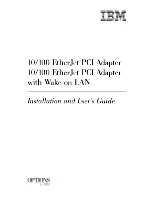
Manual PCI-DA12-8/16
11
Chapter 3: Option Selection
Voltage output ranges are determined by switch settings as described in the following paragraphs. Also,
the method to update D/A outputs is programmable as described here and in Chapter 5, Programming.
Output Ranges
There is a three-position slide switch associated with each DAC channel to make voltage range selection:
switches S1 (Channel 0) through S16 (Channel 15). A silk-screen diagram on the card defines switch
positions to use for each range. In addition to the switch, one jumper per channel is used to select
Voltage vs Current Output. The following table presents the same information:
Voltage Range
S1
S2
S3
JP1-16
0 to +2.5V
OFF OFF On
S
et
in
P
os
iti
o
n
V
0 to +5V
OFF OFF OFF
0 to +10V
OFF ON
OFF
-2.5V to +2.5V
ON
OFF ON
-5V to +5V
ON
OFF OFF
-10V to +10V
ON
ON
OFF
Current Range
S1
S2
S3
JP1-16
4 mA to 20 mA
OFF OFF OFF Position I
Analog Output Update
Analog outputs are updated under program control in any of three ways:
a.
Automatic Update:
Each channel is updated individually when new data are written to the
related high-byte base address. Individual update mode may be set by a special read operation as
defined in the programming section of this manual.
b.
Simultaneous Update: The outputs of all D/As may be updated simultaneously. This is done by
first enabling simultaneous updating for all outputs, preloading the low and high bytes of each DAC, and
then initiating a simultaneous update by software command.
c.
Timer Update:
The counter/timer can initiate updates. First, disable interrupts and
updates (read base+4 and read base+6) and enable Simultaneous Updates (read base+0). Then write
the initial values into the DACs. Program the counter/timer for the tick frequency (mode 2 or mode 4),
initialize your ISR, enable updates (read base+5), and enable interrupts (read base+3). This counter-
generated update pulse is available at the 40-pin header connector (OUT2) to synchronize external
devices.
Refer to Chapter 5, Programming of this manual for more detail on this process.












































